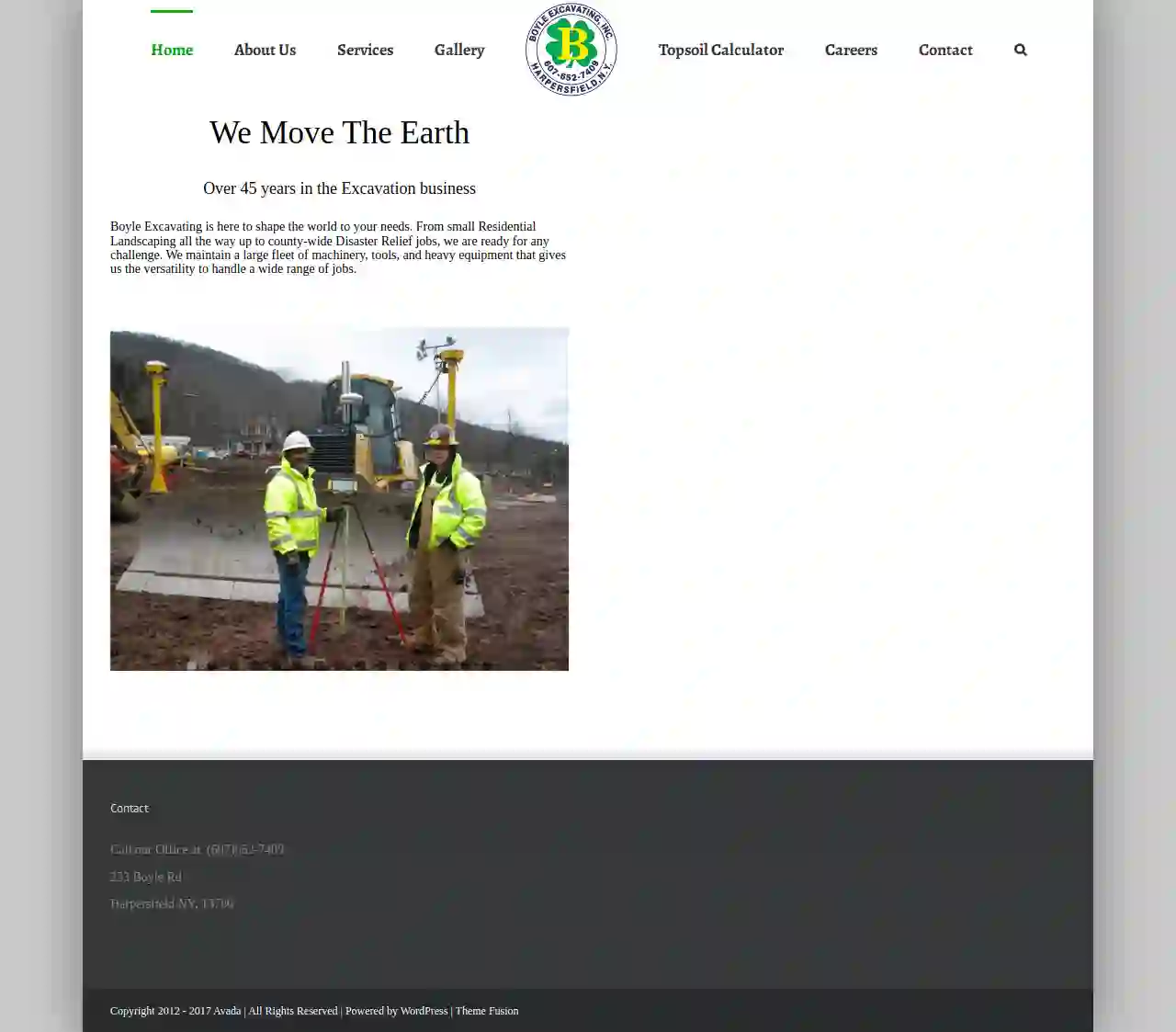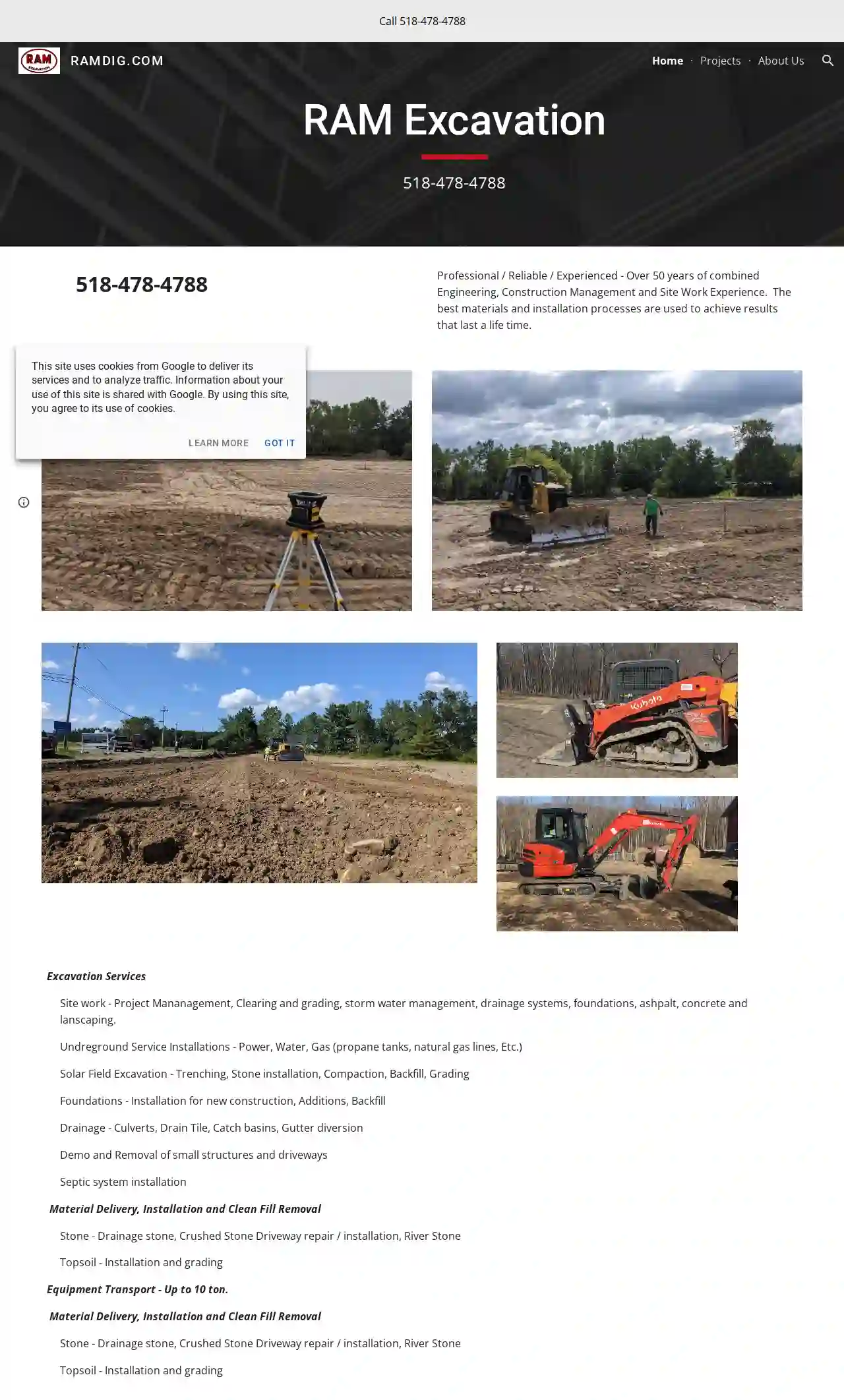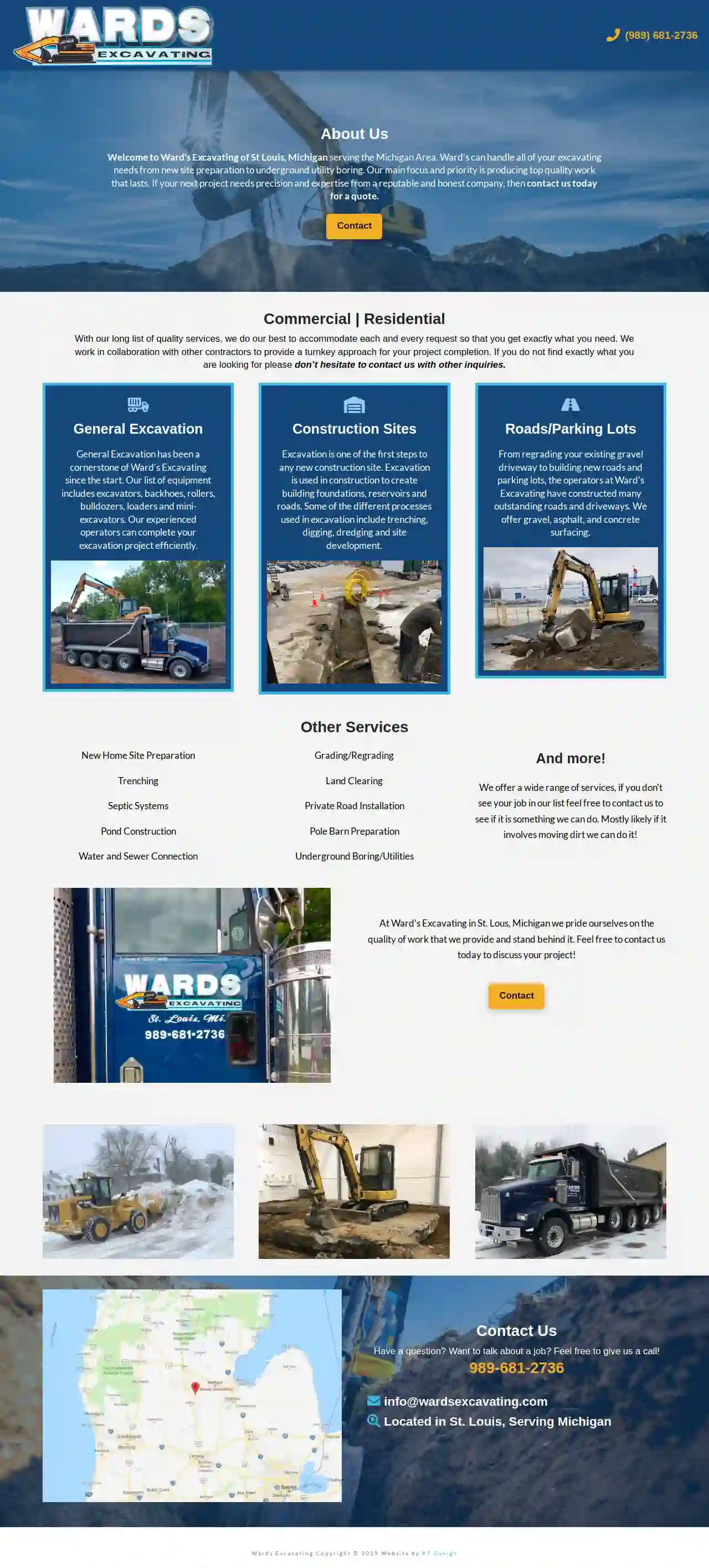Excavation Contractors Arlington
Top Excavation Companies in Arlington
Receive 3 FREE Excavation Contractors quotes for your project today! Compare profiles, reviews, accreditations, portfolio, etc... and choose the best offer.

Boyle Excavating Inc
4.912 reviews233 Boyle Road, Harpersfield, 13786, USBoyle Excavating: Over 45 Years of Experience Boyle Excavating has been shaping the world to meet your needs for over 45 years. From small residential landscaping projects to large-scale county-wide disaster relief efforts, we're ready to tackle any challenge. Our extensive fleet of machinery, tools, and heavy equipment provides the versatility to handle a wide range of jobs. Our commitment to using the latest technology ensures our customers receive the best possible results. We believe in staying ahead of the curve, as technology is constantly evolving. We're passionate about our work and excited to see what each new day brings. We take pride in transforming dreams into reality, working closely with construction managers who recognize our dedication and ability to handle any task. Our team of dedicated and loyal employees is the backbone of our success, allowing us to deliver exceptional quality in every project.
- Services
- Why Us?
- Our Team
- Gallery
Get Quote
JF Petroleum Group
1Corpus Christi, USFor over 75 years, we've dedicated ourselves to becoming the foremost supplier of fuel and fluid handling systems. Our extensive range of services and products enables our skilled team to manage projects from inception to completion, positioning us as your go-to destination for all fuel management requirements. We pride ourselves on being the national leader while keeping a strong local presence. We have 46 regional offices strategically located throughout our service areas, 7 modern distribution centers across the country, and certified technicians located to service all of our customer's needs in a timely fashion.
- Services
- Why Us?
- Testimonials
- Gallery
Get Quote
Straight Line Foundation Repair & Drainage, LLC
4.627 reviews8112 White Settlement Rd., Fort Worth, 76108, USStraight Line Foundation Repair: Your Trusted Partner for Lasting Solutions Straight Line Foundation Repair & Drainage in Dallas, Fort Worth & Abilene is dedicated to providing every client with a long-lasting solution for their foundation problems. We take pride in our work and guarantee that our foundation repairs will stand the test of time. If you're in the Fort Worth, Dallas, or Abilene, Texas area and need a reliable foundation repair specialist, look no further than Straight Line Foundation Repair & Drainage. We understand that a strong foundation is crucial for a strong home. That's why our team of experienced professionals has spent years restoring and repairing foundations throughout North Texas. We also specialize in commercial foundation repair, ensuring that your business has a solid base to thrive on. At Straight Line Foundation Repair & Drainage, we are fully licensed and insured, and we work closely with our clients from the initial assessment to the final repair. We provide a straightforward evaluation of your foundation and offer a detailed estimate for any necessary repairs. Our commitment to exceptional customer service sets us apart. We believe in transparency and honesty. We'll explain the cause of your foundation problems and provide you with the best possible solution. We're confident that you'll be satisfied with our work and our dedication to your peace of mind.
- Services
- Why Us?
- Testimonials
- Gallery
Get Quote
Ram Excavation
51 reviewsAllen, USThis is RAM In early 2020 Rick and Mike became RAM. A unique partnership that brings together exceptional project management and true construction grit. This team will deliver for you on your next project, be it a small land clearing job or large site work project. Rick Premo Rick Premo - MBA / MS Mfg Engineering. 28 years of professional experience in management, leadership, engineering and construction. Specializing in project management, ensuring construction projects are completed on time and on budget. Rick received a BS in Manufacturing Engineering 1992 from Boston University and quickly developed a passion for manufacturing and construction management. Rick has a diversified background and has held many positions in the corporate world including Program Management, Plant Manager, Materials Manager, Quality Manager, Senior Product Engineer and Computer Consultant. His expertise is in managing multi-million dollar projects, delivering results to customers and stakeholders. Rick has also had a very diverse career in the private sector. Owning several businesses focusing on construction projects, land development and real estate. Mike Fennel Mike Fennel - Master Electrician. Over 20 Years of construction experience specializing in managing union site work for the Local 236 Electrician's Union. Mike has spent many years "grinding it out" at Global Founderies, building the infrastructure to support the high tech chip manufacturer. Before becoming a partner Ram Excavation, Mike led teams of men on the job site as a General Forman. Each day ensuring that the manpower, materials and coordination so the projects go smoothly. He has been in commercial construction management for 20 years. He has worked multiple building projects from the ground up. Since Mike has ventured into the private space he has maintained his relationship with the Union and in the future plans to provide support to his brothers on the job site. On a personal level Mike is "got your back" kind of guy. Extremely hard working, dependable and reliable. There is no quit in this man...
- Services
- Why Us?
- Our Team
- Gallery
Get Quote
EarthX
4.312 reviews2439 E. St. Vrain Street, Colorado Springs, 80909, USAbout Us & Why We are The Best For the Job EarthX is Colorado’s premier landscaping choice, specializing in landscape construction of commercial projects, parks, and sport fields, as well as services surrounding property maintenance, land reclamation and erosion control. Our Story Enriching the lives of our customers and employees, while also preserving our nation’s waterways, forests, and natural resources to help sustain a positive future for generations to come. Our Leaders Since contracting with EarthX in 2019 for several communities, my landscaping issues have diminished greatly. EarthX is one of very few landscape contractors that is willing to quickly address individual homeowner issues. The attention to detail and multiple options presented for each problem allows me to fit all types of repairs and improvements into tight budgets. Last, but certainly not least, EarthX does not nickel and dime for irrigation repairs and takes ownership for their own mistakes or issues along the way. I would recommend EarthX to any fellow community managers for ongoing landscape maintenance and for large landscape installation projects for newer communities. Alex Carlson VP of Operations Centennial Consulting Group As a real estate developer, we oversee many commercial and residential properties throughout the Colorado front range. We have used EarthX for many years for everything from building fences and installing parks to installing and maintaining landscapes. Their excellent work has been instrumental in improving the appearance and function of every property. They are easy to work with, consistent, and good at what they do. Their costs are very fair. You always know when you hire EarthX that the job will be done in a timely manner and be done right. They are also very responsive and address any issue that comes up in a timely manner. Thanks, EarthX! Chasity McMorrow Colorado Springs I’ve been using EarthX for several years now. I always feel like a priority, regardless of the scale of the work I am requesting. They are easy to get a hold of and have been very responsive. The quality of work is top-notch and is always reasonably priced. The team at EarthX came out to my house and gave me a free estimate and consultation for a recent project. The work was scheduled and completed just a week later. The new grass looks great, and my irrigation system runs more efficiently than ever. I’ve recommended EarthX to all my family and friends. Ben PetersonColorado Springs
- Services
- Why Us?
- Testimonials
- Gallery
Get Quote
JET Dirt Excavation
57 reviewsFort Worth, US- Services
- Why Us?
Get Quote
RR Excavating & Demolition LLC
54 reviewsAllen, USAbout RR Excavating RR Excavating is a family-owned and operated business with over 20 years of experience in the excavating industry. We are committed to providing our clients with high-quality services at competitive prices. We specialize in a wide range of excavating services, including: Site preparation Grading Demolition Foundation work Utility installation And more! We are fully licensed and insured, and we have a team of experienced and qualified professionals who are dedicated to providing our clients with the best possible service. We are also committed to safety and environmental responsibility. We use the latest equipment and techniques to ensure that our projects are completed on time and within budget. If you are looking for a reliable and experienced excavating contractor, contact RR Excavating today for a free estimate.
- Services
- Why Us?
- Gallery
Get Quote
Aresa Home Solutions
510 reviews1234, Main Street Harlingen, Harlingen, 9335, USWelcome to Aresa Home Solutions, your one-stop shop for all your home repair and improvement needs in the Rio Grande Valley! We proudly serve homeowners in Harlingen, Brownsville, McAllen, and surrounding areas. At Aresa Home Solutions, we understand the importance of maintaining a comfortable and functional living space. Whether you are dealing with a leaky faucet, a cracked foundation, or simply want to update your kitchen, our team of experienced and licensed professionals is here to help. We offer a wide range of services to meet your every need, including: Interior repairs Exterior repairs Home improvements Preventative maintenance Why Aresa? We’re not just another home improvement company–we’re your trusted neighbor. As a local business deeply rooted in the Rio Grande Valley community, we understand the unique needs of homes in our region and are dedicated to delivering exceptional service. Our team is made up of highly skilled and experienced professionals in all areas of home repair and improvement. From licensed plumbers and electricians to seasoned carpenters and roofers, we have the expertise to handle any project, big or small. Save time and effort by avoiding the hassle of coordinating with multiple contractors. Aresa offers a comprehensive range of services, including roofing, solar installation, additions, remodels, plumbing, electrical, HVAC, and even carports. We are your one-stop solution for all your home improvement needs. Call us today for a no-obligation quote on your project!
- Services
- Why Us?
- Testimonials
- Gallery
Get Quote
Wards Excavating
4.29 reviewsSpring, US- Services
- Why Us?
Get Quote- R
R & R Ditching
4.811 reviewsSpring, US- Services
- Why Us?
- Gallery
Get Quote
Over 3,943+ Excavation Contractors onboarded
Our excavation providers operate in Arlington & beyond!
ExcavationHQ has curated and vetted Top Excavation Companies arround Arlington. Find a trustworthy pro today.
Frequently Asked Questions About Excavation Contractors
- Trench Collapses: Unstable trench walls can cave in, posing a severe risk to workers. Proper shoring and sloping are crucial safety measures.
- Utility Damage: Striking underground utilities (gas, water, electric) can cause leaks, explosions, or electrocution. Accurate utility locates and careful digging are essential.
- Falling Objects: Materials or equipment falling into excavations can injure workers. Securing work areas and using appropriate safety gear is vital.
- Equipment Accidents: Operating heavy machinery involves risks of rollovers, collisions, or mechanical failures. Trained operators and proper equipment maintenance are critical.
- Environmental Hazards: Excavated soil might contain hazardous materials (asbestos, lead). Proper testing and disposal procedures are necessary.
- Hauling to Designated Disposal Sites: Transporting excavated material to approved landfills or recycling centers.
- Recycling or Reuse: If suitable, some excavated soil might be recycled for other projects or reused on-site for landscaping or backfilling.
- Complying with Regulations: Adhering to local and environmental regulations for soil disposal to prevent contamination or illegal dumping.
What are the risks associated with excavation?
What is the difference between cut and fill excavation?
Cut: Involves excavating soil from an area where the existing grade is higher than the desired grade.
Fill: Refers to using the excavated soil ('cut' material) to raise the grade in an area where the existing grade is lower than desired.
This method minimizes the need to import or export soil, reducing costs and environmental impact. It's commonly used for site preparation, road construction, and landscaping.
What is the difference between excavation and grading?
Excavation: Primarily involves removing earth or other materials from a site. It's about digging down and creating space.
Grading: Focuses on shaping and leveling the ground to a specific slope or elevation. It's about adjusting the existing terrain.
For example, you might excavate a foundation and then grade the surrounding area to ensure proper drainage and a level surface for landscaping.
How do you handle soil disposal after excavation?
What are the risks associated with excavation?
- Trench Collapses: Unstable trench walls can cave in, posing a severe risk to workers. Proper shoring and sloping are crucial safety measures.
- Utility Damage: Striking underground utilities (gas, water, electric) can cause leaks, explosions, or electrocution. Accurate utility locates and careful digging are essential.
- Falling Objects: Materials or equipment falling into excavations can injure workers. Securing work areas and using appropriate safety gear is vital.
- Equipment Accidents: Operating heavy machinery involves risks of rollovers, collisions, or mechanical failures. Trained operators and proper equipment maintenance are critical.
- Environmental Hazards: Excavated soil might contain hazardous materials (asbestos, lead). Proper testing and disposal procedures are necessary.
What is the difference between cut and fill excavation?
Cut: Involves excavating soil from an area where the existing grade is higher than the desired grade.
Fill: Refers to using the excavated soil ('cut' material) to raise the grade in an area where the existing grade is lower than desired.
This method minimizes the need to import or export soil, reducing costs and environmental impact. It's commonly used for site preparation, road construction, and landscaping.
What is the difference between excavation and grading?
Excavation: Primarily involves removing earth or other materials from a site. It's about digging down and creating space.
Grading: Focuses on shaping and leveling the ground to a specific slope or elevation. It's about adjusting the existing terrain.
For example, you might excavate a foundation and then grade the surrounding area to ensure proper drainage and a level surface for landscaping.
How do you handle soil disposal after excavation?
- Hauling to Designated Disposal Sites: Transporting excavated material to approved landfills or recycling centers.
- Recycling or Reuse: If suitable, some excavated soil might be recycled for other projects or reused on-site for landscaping or backfilling.
- Complying with Regulations: Adhering to local and environmental regulations for soil disposal to prevent contamination or illegal dumping.